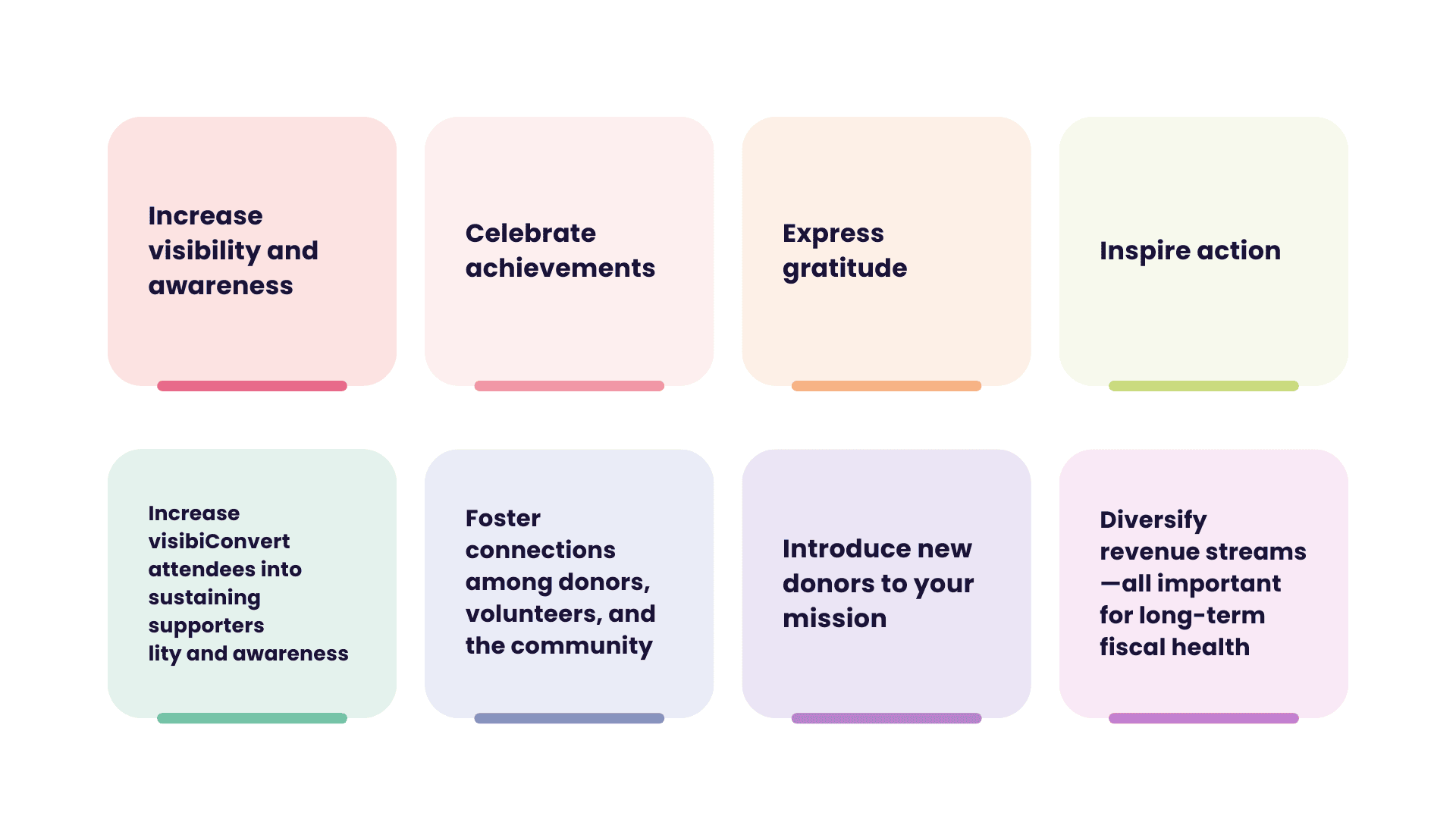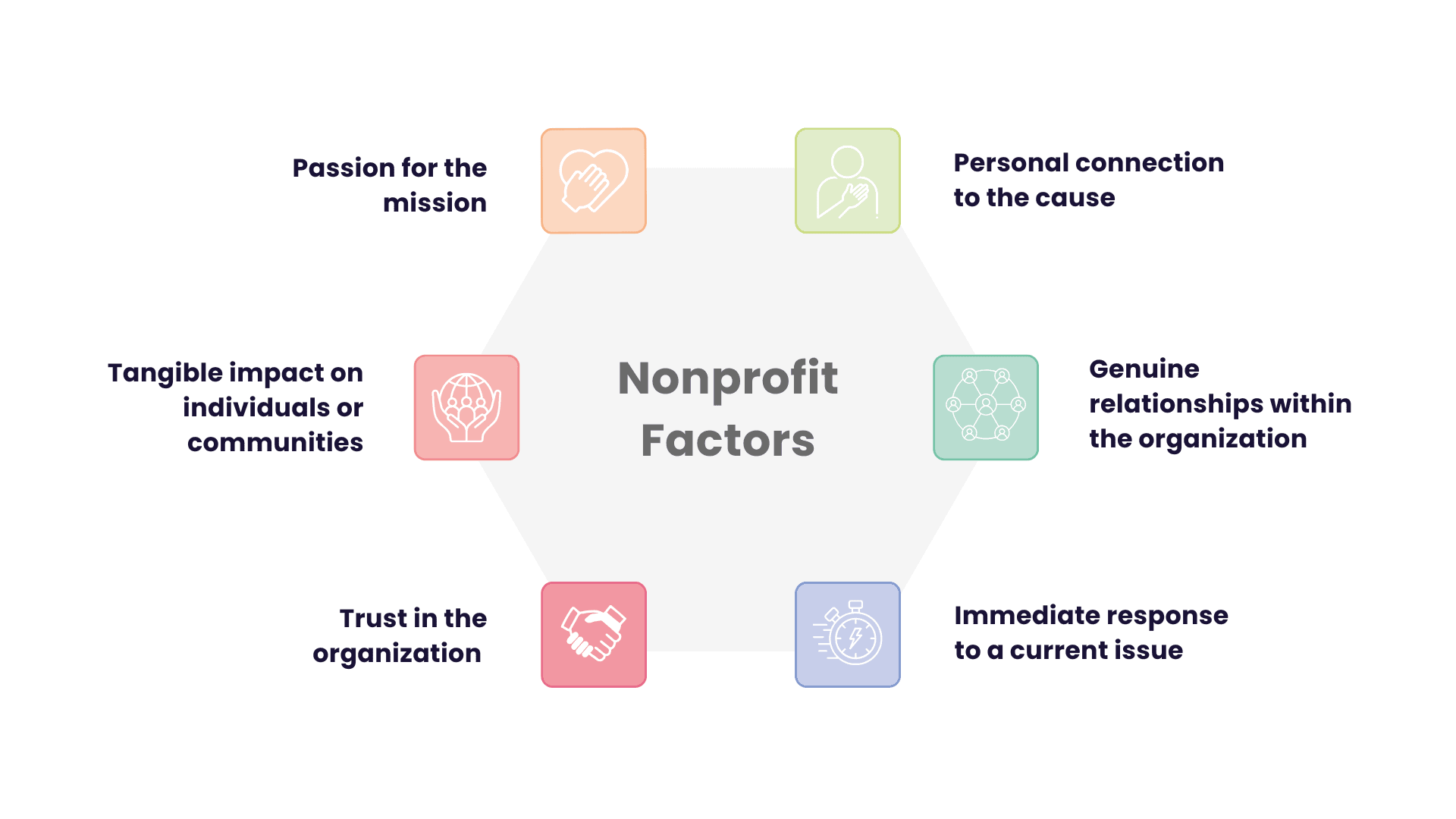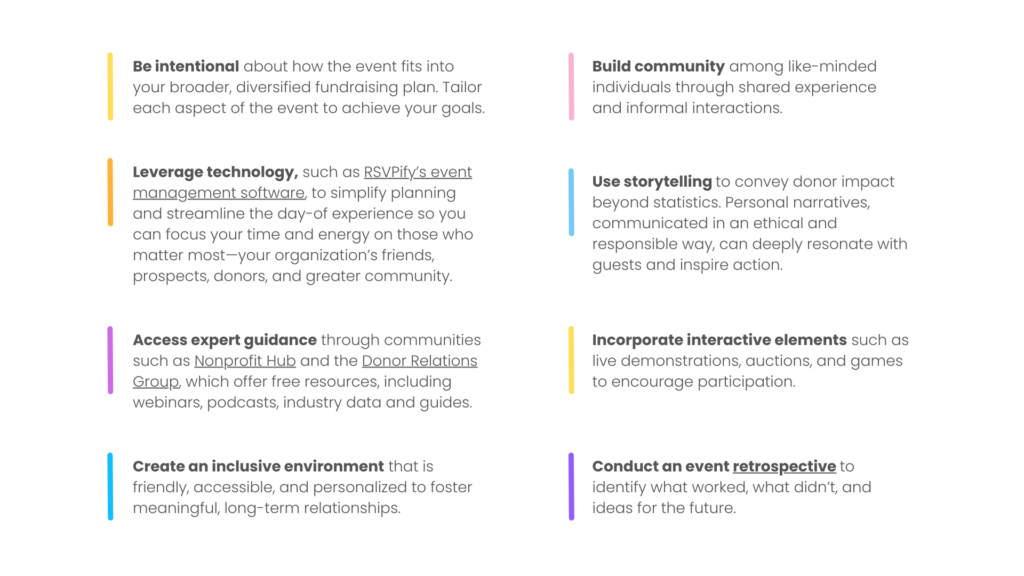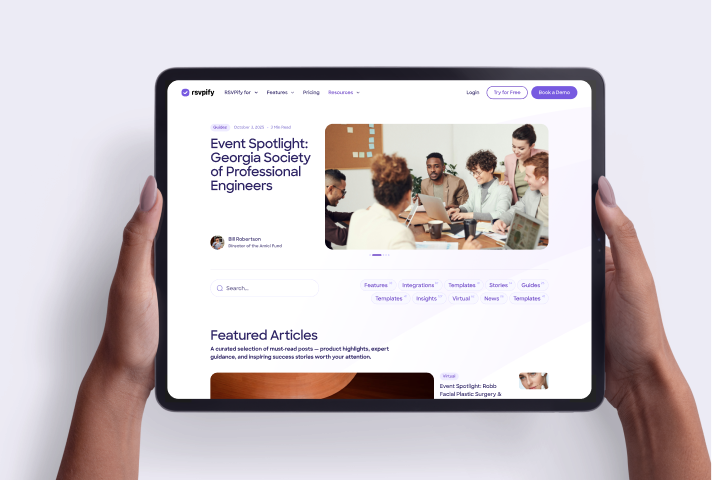About the Author: Caren Friedman is the Founder and Chief Storyteller at Caren Friedman Communications, LLC, where she helps nonprofit organizations increase engagement through audience-driven communications and inspired storytelling. She has spent two decades in nonprofit development and communications, including leadership positions at the Art Institute of Chicago and Lincoln Park Zoo, and repeat contracts at Grant Park Music Festival and The University of Minnesota.
Ah, the nonprofit gala.
Hotly debated among development and advancement professionals, the merits and challenges of hosting annual fundraising events are as varied as the missions they support.
Often the singular moment a nonprofit interacts face-to-face with many of their supporters, an annual event presents the prime opportunity to raise funds and build relationships. In addition to boosting financial metrics, events can:

Of course, events require significant capital and human resources. As anyone who has helped plan one knows, it is not just logistics, seating charts, and auction items (all tricky enough as is!). The magic of a thoughtfully curated event—especially in a post-COVID landscape—involves a donor engagement strategy that starts long before the invitations hit mailboxes and continues through and beyond the event itself.
Even so, the in-person event has made a strong post-pandemic comeback:
Annual events remain strategic fundraising and engagement tools for mission-driven organizations. The role of events in the past few years has increasingly shifted away from strictly fundraising occasions towards meaningful relationship- and community-building moments, so understanding your audience and how they experience your event is essential to determining if your effort is “worth it.”
No matter where you stand on the gala divide, you likely agree that donors are not their wallets. The nonprofit community is comprised of beautifully unique individuals who are driven by many factors, including:

Dynamic and diverse communities of support mean there’s no one-size-fits-all gala. Knowing your audience and understanding what motivates them to support your mission allows you to tailor a strategic touchpoint for your specific audience and goals.
Early event planning conversations should include the following:
Geffen Playhouse in Los Angeles, California has hosted Backstage at the Geffen for 22 years and knows a thing or two about the donor event experience.
The intimate theater venue caters their multi-model event to three distinct audiences: VIPs, mid-range donors/prospects, and the larger theater community. Backstage includes three components, respectively: pre-show cocktails and formal dinner; mission-driven performance; and a community afterparty.
Clearly identifying and executing goals for each demographic is key to their success. Geffen VIPs—the exclusive group donating at the highest level to attend pre-show festivities—tend to be civically engaged and have the capacity to impact the broader Los Angeles arts community. They often have a personal link to the board of directors, but don’t necessarily know details about Geffen. Providing high-touch engagement opportunities, such as an invitation backstage for a toast with the artistic director, creates deeper connections to the theater.
A larger cross-section of supporters join the VIPs for the can’t-miss show—a demonstration of just how fun and exciting a Geffen production is. Multiple surprise guests, such as Emmy winner Sterling K. Brown, reveal themselves on stage to delight the eager audience. Single-ticket holders may be inspired to become season subscribers, for example.
And because Geffen welcomes and celebrates everyone with a strong affinity to their mission, regardless of capacity to give, the larger community is invited to the afterparty on a pay-what-you-can basis. Weinberg says the party serves as “an emotional climax to our community of supporters, which is much broader than funders.”
Although strategy may differ for each part of the evening, every attendee leaves the event thinking, “Wow, Geffen does it right!” she says. “We take great pride in hosting this celebration of our mission.”
An arts and culture nonprofit like Geffen can immerse event attendees in its art form to build connection. Think musical performances, giraffe encounters, and museum exhibition previews.
But what if your organization doesn’t have a Sterling K. Brown or a Tony-nominated Michaela Diamond in your pipeline? How can your nonprofit engage guests when you are a little less symphony and a bit more heartstrings?
Let It Be Us (LIBU), a foster and adoptive parent recruitment agency based in Barrington, Illinois, knows that family planning can be a sensitive topic. “Challenges are inherent in events for social service agencies like ours,” says LIBU board member Jessica Canning. “We embrace those challenges by talking openly and honestly about the misconceptions of foster care and the importance of the work we do each day. We find children loving, lasting homes. What could be better?”
With its core donor base in the northwest suburbs of Chicago, LIBU aims to attract younger city professionals to its downtown Be Mine gala. “Our main goals for the event are to educate prospects about our mission, create compassion by highlighting the current state of child welfare, and drive action,” says Canning, who has chaired the gala since its inception six years ago.
The small but mighty staff and volunteer team aim to cultivate compassion and inspire action through video storytelling that highlights families who have found each other through the foster/adoption process. Canning is quick to note that they incorporate lessons learned as the event evolves. “We personally introduce guests to our founder, who is great at chatting with them during cocktail hour,” she says. “But we can always do a better job of engaging guests one-on-one.”
Understanding the nuances of fundraising events can be a challenge. Thankfully, the nonprofit community is generous with their insight, and a variety of tools are available.
Keep these tips in mind to help create a memorable donor experience that fosters deeper connections—and ultimately, increased philanthropic engagement.

We are all learning—whether new to our role or seasoned event planners. Your ever-growing toolkit and confidence will prime you to orchestrate intentional “worth it” events as part of a comprehensive fundraising plan. “Think of fundraising events as ways to deepen relationships,” says Weinberg. “There’s a reason we keep events around!”
About the Author
Adam Hausman co-founded RSVPify in 2013 and has been passionate about event tech and ticketing software ever since. Also founder of Greenlight Growth Marketing, he holds degrees from Indiana University (BA English/Psychology 2008) and the University of Illinois-Chicago (M.Ed. Secondary Education 2012). He lives in Maine with his wife, 2 kids, and 2 annoying cats.
Get the latest product updates, event planning tips, and industry insights — straight to your inbox.
You can unsubscribe at any time. Your email will only be used to send RSVPify updates and will never be shared.
